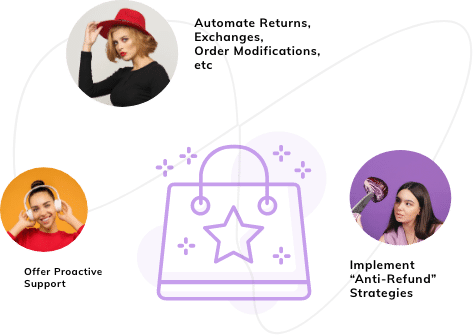Last Updated: April 2024
Understanding customer behavior is quite similar to solving a mathematical problem where the variables are unknown. The slightest change in the value of a variable can completely change the solution. This is a time of great uncertainty for the business world. The pandemic has almost completely altered the dynamics of customer loyalty – a variable that has direct implications for business growth.
However, it also represents an opportunity for brands that really understand the underlying factors to grow their market share. If the key to success is delivering a positive customer experience, customer intelligence provides the map for designing it.
To be sure, collecting customer data isn’t a problem anymore. Most businesses have access to huge volumes of data across multiple touchpoints like websites, social media, and customer support. However, most teams, like sales and marketing, for example, have highly structured processes that operate in virtual isolation from each other.
The will to integrate different processes and systems is also oftentimes lacking. Unfortunately, this limits collaboration and innovation, impacting growth. Adapting to change can be tough; however, changing market conditions make it imperative for you to invest in real-time customer intelligence. For example, Google Chrome has announced plans to scrap third-party cookies (thetradedesk) starting 2024.
What is Customer Intelligence?
Customer Intelligence has a lot of overlap with Customer Analytics and the two terms are often interchangeably. However, customer intelligence is distinct from customer analytics in that it is the product derived from further processing of the latter. Customer Intelligence integrates data from across multiple channels like web and mobile to build a comprehensive picture of the customer psyche. Customer Intelligence is valuable because it can help brands predict their future behavior based on demographics, purchase frequency, and average order values.
For example, you can change the order in which product categories appear on your web store for specific customers and streamline their user experience by analyzing customer intent. In turn, this data can be used to optimize marketing funnels and create up-sell offers. But, that’s not all; leveraging customer intelligence data can produce dramatic results across multiple KPIs like conversion rate and retention.
As you may have guessed by now, customer intelligence is a discipline that forms an integral part of the larger martech ecosystem. IBM Predictive Customer Intelligence and Accenture Insights Platform are two of the leading customer intelligence platforms available today.
How Customer Intelligence Drives Business Goals

With the rapid adoption of technologies like AI and Big Data, businesses will engage their customers on a ‘one-to-one’ basis. High-quality customer intelligence can play a key role in the evolution of this concept. Here are a few promising business applications of customer intelligence that you should take notice of:
1. Build 360-degree customer profiles:
Customer preferences are dynamic and can change quite quickly. This means that you need real-time insights from multiple sources to develop an effective engagement strategy. Customer intelligence tools allow you to make quick decisions concerning marketing, product, or customer service based on the latest trends. For example, in the early days of the pandemic, demand for personal care and hygiene products skyrocketed exponentially. In fact, Amazon had to suspend deliveries of all other products temporarily to deliver them.
More often than not, the decisions you make in one business area can have unintended consequences elsewhere. With customer intelligence, you can easily connect customer CRM profiles with survey data and understand them better. This can help you make targeted adjustments to drive customer engagement and retention.
2. Take personalization to the next level:
83% of customers (Forbes) expect rapid personalization. This emerging trend has raised the bar for brands as they have to adapt to individual customer preferences in near real-time. Customer intelligence is vital to interpret customer actions and develop relevant and balanced experiences- at scale – to drive conversion and revenue personalization.
For example, sometimes brands go overboard to give customers more choice- new product categories, offers and discounts, multi-tier loyalty programs, etc. This can be counterproductive as the customer may be too confused to decide and abandon a purchase altogether. With customer intelligence, you may be able to increase ROI with less effort.
3. Boost sales and revenues:
Declining margins are a grim reality in the post-pandemic scenario for businesses across verticals. With supply chains impacted, business leaders often pay more to stock up on inventory and pay employees. Customer intelligence can help you find emerging demand patterns across different product categories and come up with complementary offers while optimizing the layout of your online storefront. This can increase the overall sales, boosting revenue and reducing inventory costs.
4. Deliver proactive customer service:
Customer service is often the last line of defense when it comes to customer retention. By identifying trends in terms of repeat sales, CSAT/NPS scores, and purchase frequency, you can take proactive steps to eliminate friction and build meaningful relationships with customers.
For example, long hold times and repeated transfers are among the biggest irritants for customers. With customer intelligence, you can synthesize your customer service interaction data to optimize aspects like call routing, queue management, and follow-up. The latest customer intelligence tools can create an emotional profile based on customers’ language and emotions.
This information is then displayed to agents that the customer eventually speaks with, along with recommendations on the best way to handle their expectations.
Last Words:
Updating your technology stack with a customer intelligence tool is a critical necessity in the post-pandemic environment. After all, data-blindness can put you at a competitive disadvantage versus the competition. However, you also need a capable customer support team to leverage the insights it is likely to create. Hiring and training costs can add to your operating costs in the short term.
Additionally, you can equip your customer support team with the AI-powered live chat solution offered by Saufter. With this omnichannel platform, you can improve your customer engagement and cut down your response time as well. What’s more, it also comes with customized pricing plans.
So, what are you waiting for?









